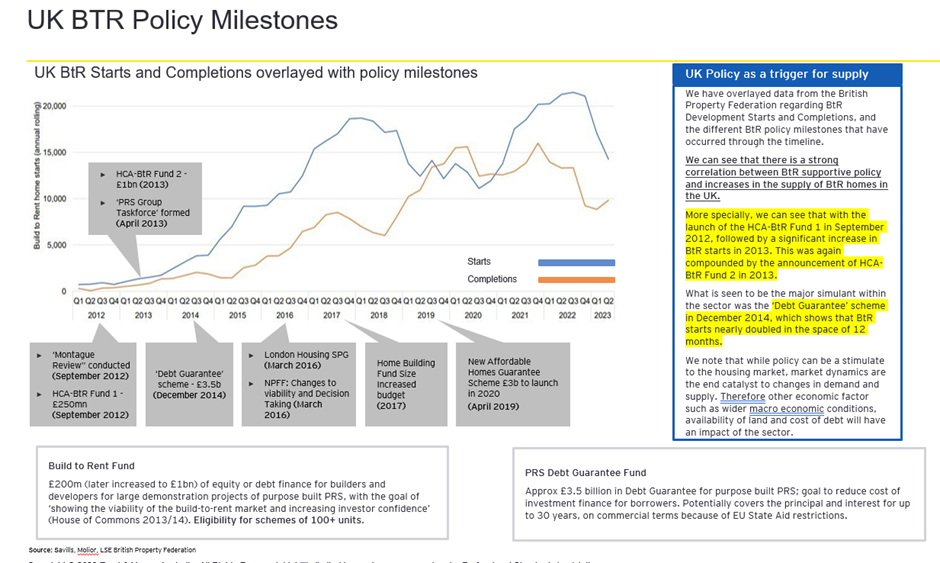

The UK’s build-to-rent (BTR) sector expanded by 508% from 47,238 units in 2016 to 240,202 units in 2022, with Savills' latest report highlighting a continued market surge through a £4.5 billion investment in 2023, according to the Property Council of Australia.
“The BTR market has seen continued growth due to the housing supply and demand imbalance and high levels of rental growth,” Guy Whittaker (pictured above), Savills’ head of UK build-to-rent research, told the Property Council. “This has led to inflation-matching returns while yields have proven comparatively strong.”
The UK’s BTR sector reached a milestone with more than 100,000 completed homes, plus 53,800 under construction and a future pipeline of 112,800 homes, including pre-application stages, totalling the sector at 267,000 homes.
Luke Mackintosh, partner at EY real estate advisory project management, attributed the sector’s growth to keen investor interest and institutional capital influx, sparked by policy incentives and the Montague Review’s recommendations. These initiatives, including the Build to Rent Fund and various tax breaks, have significantly bolstered the sector’s development.

Mackintosh noted the Debt Guarantee scheme, launched in late 2014, as a key driver, nearly doubling BTR project initiations within a year.
“There’s a strong correlation between BTR supportive policies and increases in the supply of BTR homes in the UK,” he said.
For Australia, Mackintosh emphasised the significance of the BTR asset class for its potential to substantially boost housing supply amid a critical shortage of new rental stock.
“For Australia to grow the BTR sector, institutional investment is critical to prove the commercial model and create a liquid and viable investment proposition,” he said.
To pave the way for a thriving BTR market in Australia, mirroring the UK’s success, a few barriers must be overcome.
“Foreign capital, which dominates in the sector, is needed to underpin the growth of the sector in Australia,” Mackintosh said. “We need to classify the product as commercial residential and acknowledge this is a different asset class to traditional BTR.
“We also need to remove barriers such as stamp duty surcharge; land tax surcharge; treatment of GST in line with commercial residential assets such as PBSA; confirm MIT at 15% with no requirement for affordable housing or 10% with a 5% requirement for affordable housing; and provide a Debt Guarantee Scheme.”
Get the hottest and freshest mortgage news delivered right into your inbox. Subscribe now to our FREE daily newsletter.
